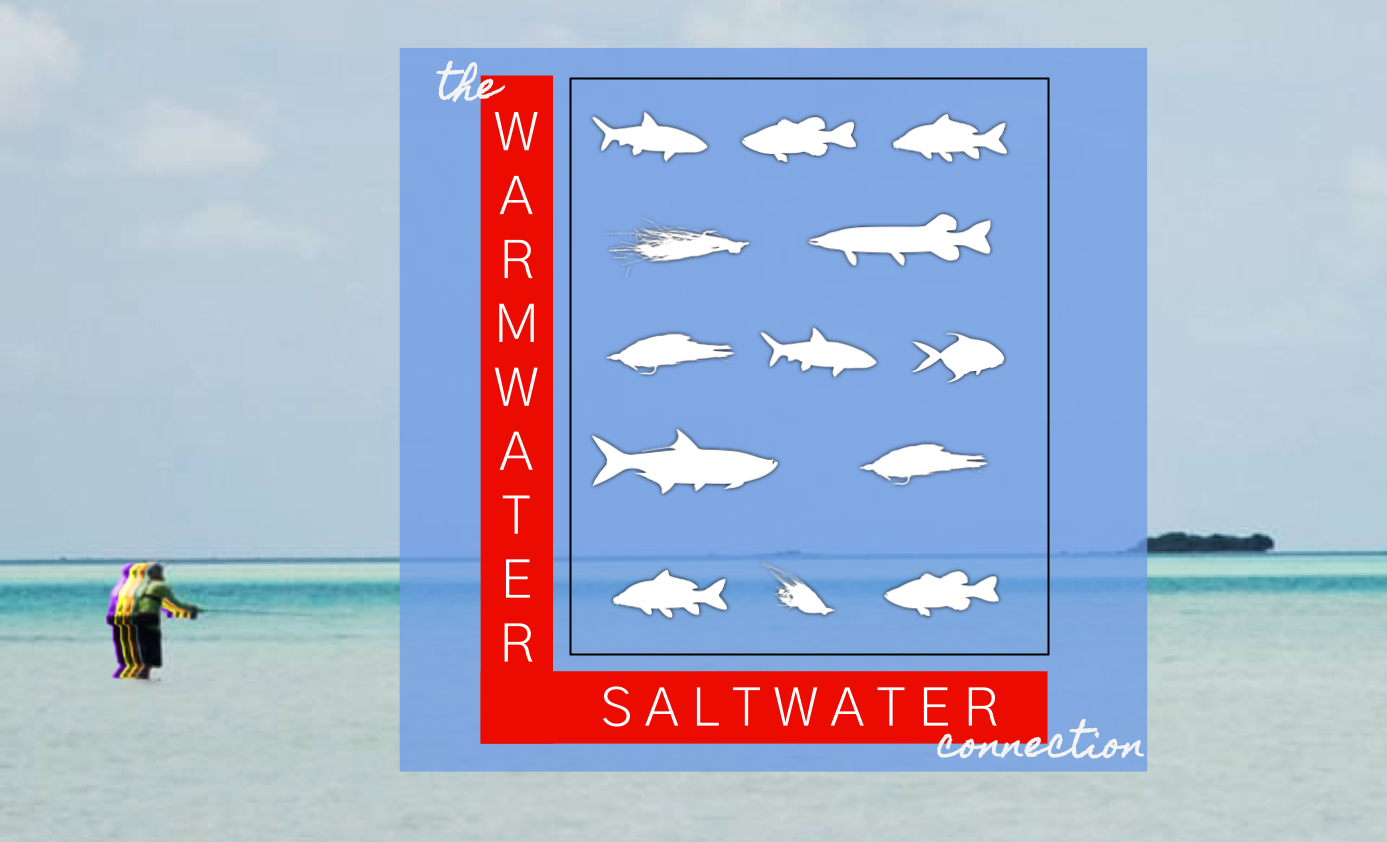The Warmwater-Saltwater Connection
Can local warmwater fisheries help fortify the angling skills necessary for saltwater fly fishing?

Revisited March 2025
I'd be the first to admit, we've been on a trout bender. After all, we live and write about fishing in the Rockies so it's understandable... but I've been neglecting the warmwater fishing around me, even though we used to chase after bass and carp very frequently. Sometimes it just takes a rattle to the system to reset. For me, my recent bonefishing trip left me grasping at straws to get back on the flats, or at least replicate that saltwater fishing experience. Even though they have value on their own, using a bass pond or carp flats as a training ground for future saltwater trips has revitalized my appreciation for targeting local warmwater species. There is also some interesting crossover that I now appreciate more fully.
Local warmwater fisheries can fortify the angling skills necessary for saltwater fly fishing. Don't believe me? I don’t blame you, but hear me out…

- Bigger rods, and bigger flies. The biggest difference in going to the salt (for trout people) is using stiffer rods, and still needing to cast with rapid accuracy. So on the bass ponds, or carp flats, you have the chance to sharpen your skills to deliver comparable flies quickly and practice hitting targets. Don't blindly cast, but simulate a saltwater situation where you need to pick up line, haul, and present the fly as quickly as possible. Plus, casting practice is more fun when you can actually catch something, instead of casting to a parked water bottle on a grassy lawn. Also, you'll be using heavier lines, so you can practice rigging your non-slip loop knots, blood knots, etc...
- The Strip Set. I'm sure you've heard about this, but you don't want to trout set on a saltwater fish. You will be mocked. Instead, strip set, as if you're quickly jerking a streamer, to set the hook into your target's mouth. If you miss, no problem, a strip set keeps your fly from rocketing out of the top of the water column and might still be in play for an aggressive fish. Again, much more fun to practice on a fish than constantly repeating the mantra in your head and hoping for the best.
- Getting fish on the reel and clearing your rod guides. When you hook into a saltwater fish, you'll want to get your line cleared, and put your reel to work as quickly as possible. In warmwater, fishing for carp or wipers offers great opportunities to experience similarly strong surges from fish. Once you've set the hook and the fish starts running, use your non-casting hand to hold your extra line away from your body (and the reel) to help line smoothly through the guides of your rod, meanwhile resolving any weird passive tangles that might have developed.
- Fly crossover. In a simplified world, warmwater and inshore saltwater fish basically eat the same types of flies: crustaceans, and baitfish. You can fish poppers in both realms, or Clouser Minnows, or any number of other flies. Fish a Seaducer to pike, or a Tarpon Toad to bass. You might even be able to catch a bonefish on a carp Backstabber; stylistically they are close. When it's time to hit the salt, you have some flies ready to go, with an added advantage of knowing how they swim. Fly's go hand in hand with behavior so let's go to that next.
- Fish behavior crosses over. There are behavioral crossovers between warmwater and saltwater fish if you think about it. Bass and pike sit and wait to ambush prey, which may (at times) come in handy in mangroves. And bonefish tailing on flats is sometimes compared to carp rooting around in sediment. You may also encounter situations where you have to lead the fish, intercepting their path with your fly while not alerting them to your presence. Get practice here. You'll appreciate that know-how. At first, when watching fish cruising close by, you might be naturally included to land the fly right on a fish’s head, break that habit as soon as possible.
Admittedly the warm-salt connection isn’t a perfect 1:1 fit, but for those of us furthest from coastlines, fishing the salt isn't always an easy getaway. (If it is, take me with you!) The skills undoubtedly transfer, and I’ll be flexing my imagination while chasing warmwater fish with a renewed purpose. If I blur my eyes hard enough I might be able to convince myself until the time comes.
Looking for flies? Check these new assortments out




